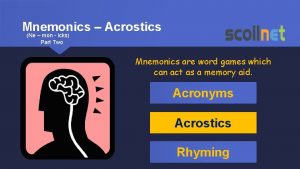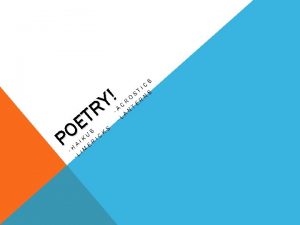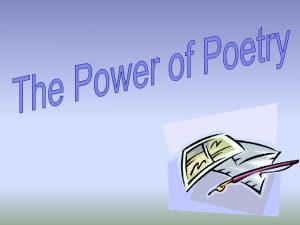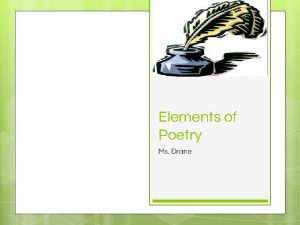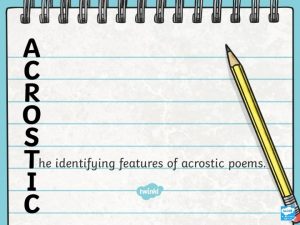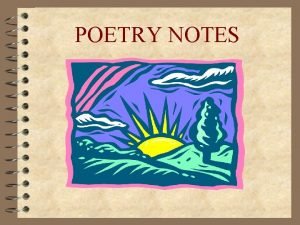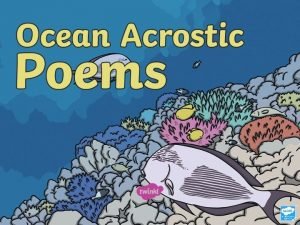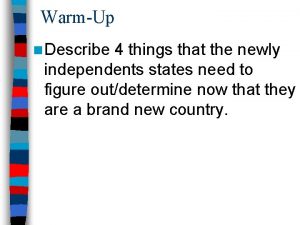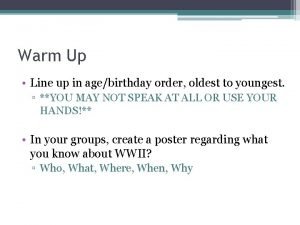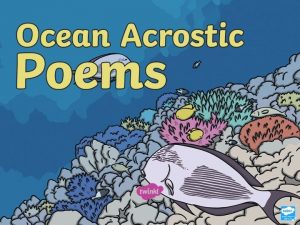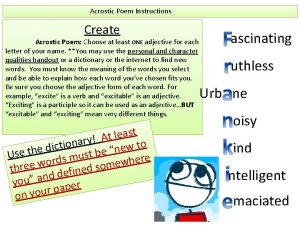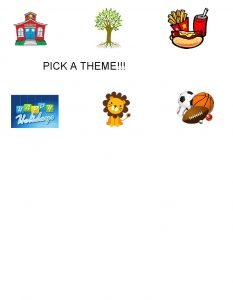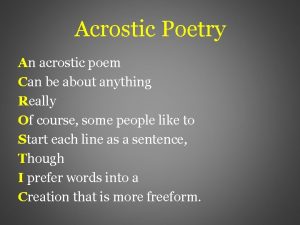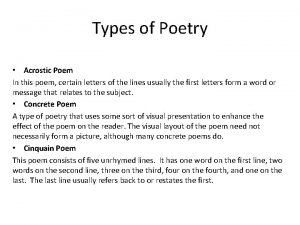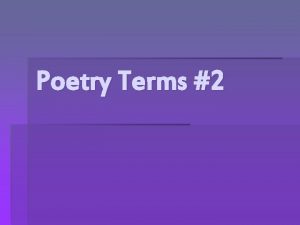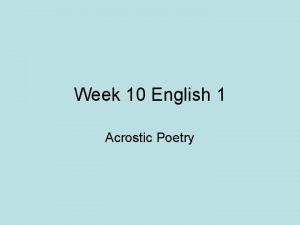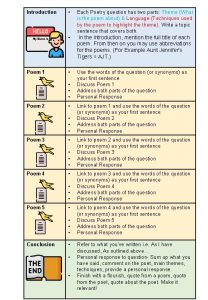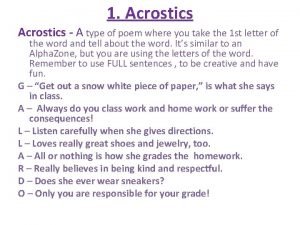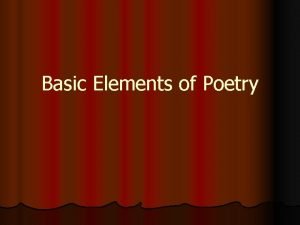TYPES OF POETRY Acrostic Poem Acrostics are poems















- Slides: 15

TYPES OF POETRY

Acrostic Poem � Acrostics are poems that go down and across. The poems don’t have to rhyme, and they can have as many words as you like. You can choose any subject you like, even your own name. Highlight or make the word you chose bold in some way.

Here is an example: �C runchy, munchy � O h, so sweet � O odles of chocolate and nuts � K ids love them! � I like to eat them hot from the oven � E veryone waits for them to cool.

Alphabet Alliteration Poem � In alliteration, each important word in the line begins with the same letter. � First word: an adjective (word describing a noun) � Second word: a noun (the subject - the person or thing) � Third word: a verb (showing the action that the subject does).

For example: �A wesome ants ache � B ony baboons bake � C razy cats crawl � D izzy dogs drool � E ager egrets eat

Colour Poem � Colour poems use your imagination and senses to investigate a subject. � The focus of the poem is on using similes and metaphors.

Example: Blue is the color of the sky. Blue is the waves in the ocean crashing on the shore. Blue is the feeling I get sometimes when I’m sad. Blue is the icy color of glacial snow. Blue smells like freshly washed bed sheets. Blue tastes like blueberry Kool-Aid. Blue sounds like jets soaring through the clouds. Blue looks like the clear waters in the sea as I swim Blue feels like the snow on my face while I’m skiing at Marble Mountain � Blue makes me want to put on my coat, hat and gloves. � Blue is my sister’s favorite color. � � � � �

Creature Alliteration Poem � This type of poem makes use of alliteration to describe a creature. � The main words in each line will all begin with the letter you choose to alliterate. Each line of the poem (except line 1) should have at least 4 words alliterating with the letter you chose.

Example: � � � This is a recatarian. A recatarian lives on really ridiculous rectangular ranches in rural Russia. A recatarian rudely eats rice, raspberries, radishes, roots, and rhubarb. A recatarian likes rusty things, Rhode Island, Rottweilers, and ravens. A recatarian wore a rickety pair of roller blades and rafted down the roaring Roseburg River. My recatarian rolled roses over the rug in my room and ruined it.

Five Senses Poem � Five senses poems use your senses to study or investigate a subject. � The focus of the poem is on using similes.

Example � Summer is yellow. � It tastes like lemonade. � It sounds like kids splashing in a lake. � It smells like dandelions. � It looks like boating. � It makes me feel overjoyed

Haiku Poem � Haiku is a form of ancient Japanese poetry. The poems are often written about things in nature or seasons. � Haiku poems are not written as complete sentences. � Haiku follows this form: � Line 1) Line 2) Line 3) � 5 syllables 7 syllables � 5 syllables

Example: � Waking up to chirps � Birds singing in the morning � Beautiful bird songs

Who-What-When-Where-Why Poem � Who, what, when, where, why poems should be 5 lines long. � The poem should tell a story or give a strong picture of someone or something. � Each line should answer on of the “w” questions in the order listed above.

Example: “Getting Ready” � WHO: I � WHAT: prepare for the race by running five miles � WHEN: every morning before school � WHERE: around the neighborhood. � WHY: You should always be prepared.
 Mikael ferm
Mikael ferm Small acrostic of life
Small acrostic of life Icks ne
Icks ne Rhyming hockey poems
Rhyming hockey poems Acrostic poem about disaster
Acrostic poem about disaster Acrostic poem help
Acrostic poem help Acrostic y words
Acrostic y words Acrostic for success
Acrostic for success Poems about the holocaust
Poems about the holocaust Acrostic poem features
Acrostic poem features 4 line poem that rhymes
4 line poem that rhymes Acrostic poem for swimming
Acrostic poem for swimming Examples of enjambment in poems
Examples of enjambment in poems Congress acrostic poem
Congress acrostic poem The cold war acrostic poem
The cold war acrostic poem Ethics acrostic
Ethics acrostic


